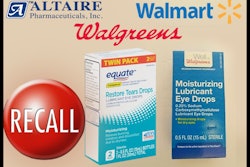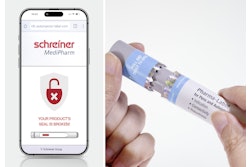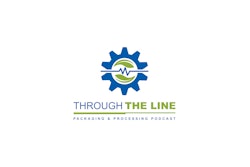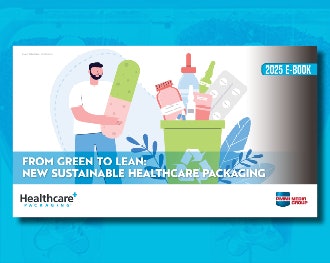It’s a long-established fact that in healthcare, supply chains are incredibly complex. Time- and temperature-sensitive drugs add extra layers of intricacy and potential problems for product quality.
Critical areas for cell therapies are chain of identity (COI), chain of custody (COC) and chain of condition (COCn) (See sidebar below, The Data Trail, for more detail). “This could be your father’s cells, your child’s. The integrity of the sample must be maintained throughout the process,” said Patricia M. Seymour, MBA, CSCP, Managing Director in the BioProcess Technology Group of BDO USA. She spoke at the 2019 PDA Cell and Gene Therapy Conference in May, highlighting that overcoming supply chain challenges is fundamental to cell therapy manufacturing.
Some of the challenges center around scalability and patient demand, which can be hard to forecast. Additionally there are multiple data collection systems that must be integrated—data integrity and tracking are key. As Seymour noted, “It’s quite an ecosystem to coordinate from start to finish. It’s not just all about the biology. IT will be critical to the supply chain—all of it has to work in great synchrony.”

Needle-to-Needle: The Autologous Cell Therapy Supply Chain
- Collection: collect and control the patient’s sample.
- Manufacturing: manipulate or modify the cell product.
- Treatment: infuse or dose the product back to the patient, with continued monitoring.
Seymour’s tips follow, categorized by activity:
Sample collection
- Reduce sample handling variability as much as possible. In an early phase trial, there may be just a couple of collection sites. When you start expanding to more locations, processes must be consistent and standardized.
- Map out scheduling and timelines in detail. Autologous therapies have a short shelf life, whether frozen or 2 to 8°C.Ensure the resources are there for processing. The sample can’t wait because of a staff member’s sick day.
- Check the weather. Seymour notes that you usually know when a snowstorm is coming. If bad weather is expected, don’t have the patient come in from far away to provide sample, only to deal with the burden of it getting stuck on Pennsylvania Turnpike.
Manufacturing/handling
- Consider time out of condition (TOoC).The starting material is temperature-controlled, and cumulative exposure during handling and manufacturing is key (rather than single exposure time). “You have to collect this information and determine what it could mean for the product,” she said.
- Choose pre-conditioned shippers delivered by couriers when possible. Think about whether GPS is a plus or a must for your situation.
- Consider static and dynamic seasonality conditions. This depends on where you are. If it’s a clinical site in northern Japan, it’s hard to get materials there without a temperature excursion, and you may need a more robust seasonal shipper.
- Qualify your payload and shipping configuration.
- Use an appropriate data logger. Seymour cautioned, “I’ve seen people pick a logger for the wrong temperature range, so it wasn’t collecting data. Check and verify that the logger meets your needs.” Some systems send auto-reminders if data hasn’t been uploaded in a certain time period.
- Prearrange transport and check holidays in the destination. If a cell therapy misses a flight or gets stuck in customs and sits a weekend, you’re missing 3-4 days. “Check the holidays where it’s going. If it goes to Europe but it’s a 4- or 5-day weekend, the sample won’t move. Customs paperwork should be prepared ahead of time. Wheels Up clearance should be considered if needed,” she said.
Seymour took this time to remind attendees that the patient has given that sample, and they may not be able to give one again.
- Product stability can determine the selection of a centralized single site model or a de‐centralized (multi-site) model. A centralized model may not be possible. Additionally, multiple patients’ samples at the same facility at once means extra vigilance is required. Samples must be labeled clearly, have different shelves/compartments in the incubator and more barcoding controls.
- Scheduling must account for the health of the patient. They may need the dose X days after a planned surgery. If manufacturing is delayed, it could be very harmful.
Single use technology
- Understand your suppliers’ supply chain. Talk about the polymers. If the raw materials come from the same source, it can lead to issues. Diversifying through vendors can reduce risk, but pay attention upstream to the raw materials themselves.
- If you don’t have to customize, don't. It’s beneficial to have redundancy built in. What if your custom supplier has an interruption?
Testing and release
-
Patient identification is critical for release. Sample management can be tough. Because of the timing, the standard release periods aren’t appropriate. Some products have a conditional release while lengthy assays take time to complete. Procedures must be in place to ensure patient safety.
-
Out of spec results must have processes. How do you deal with these? It may not be a binary yes/no if the product is still safe and efficacious.
Treatment
-
Plan for close communication. Delays in manufacturing must be relayed to the clinical director and patient, particularly if surgery is involved.
-
Consider the pharmacy/clinical layout. At a large health center, the infusion site may be a mile from the pharmacy. Seymour described this as the final mini-mile. How do you transport the product across the campus? Someone may just stick it in an EPS cooler and hop on the shuttle bus. She said, “Be very prescriptive about how to handle product at the clinical site!”
-
Related to #17, offer instructions. Seymour explained, “Typically this would be part of site initiation visit/pharmacy manual. Work closely with your clinical colleagues on specifics for the clinical site. You can’t have 100 SOPs, so don’t make these very specific for each site. But controlling vibration, temperature, time when the dose is prepared and how quickly it’s administered… these are specific instructions you can provide in documentation.”
Risk management
-
Look at an orchestration platform. The information from the MES, LIMS, etc. has to feed into some centralized space, such as Vineti’s platform. “You don't need to homegrow it. There are vendors for this,” she noted. Data confidentiality must be considered as patient data is transferred. There must be proper controls or security in place.
-
Risk mapping is an iterative process. Think about where the risks are throughout the supply chain. Use Target Product Profiles/QTPP to identify critical supply chain attributes and assess their impact as the therapy scales. “Even after you’ve gone commercial, feed the information back into the risk map,” she said. There are many tools such as HAZOP and FMEA—ensure it’s orthogonal.
-
Make sure that areas of lower risk don’t become high risk down the road. People can become lax, so risk must be reviewed periodically.
As Seymour told attendees, “You could have the best cell therapy facility design in the world, but if you can’t ship the product in a safe manner, you really have a problem.”
Sidebar: The Data Trail
Seymour offered the following key pieces of data:
-
Chain of Identity (COI): Autologous donor’s unique identifiers to their sample from order through collection, manufacturing, administration, and post-treatment monitoring. (Note: You must be cognizant of balancing COI with HIPAA and other privacy laws.)
-
Chain of Custody (COC): Data capture from the start of collection through to product administration of all touch points including staff (including third party logistics), actions performed, and the location/date/time of those actions. This info must be maintained on a per-dose level and must be readily available to address in case of a temperature excursion or other issue.
-
Chain of Condition (COCn): Data capture from the start of sample collection through to treatment that tracks temperature and other key variables essential to the quality and viability of product.
[This story originally ran 7/11/19.]






















